Job seekers and employees now expect corporate wellness programs as part of their employment packages to help optimize their health. Contrary to popular belief, you don’t need to be a large organization with deep pockets to build a successful wellness program. Small companies can deliver quality ones even with limited resources — the key to success is genuine care and commitment, not extravagant spending.
This blog provides comprehensive guidance to launch an employee step challenge through a “do-it-yourself” approach. Once leadership witnesses the positive outcomes of the program, funding for wellness initiatives will follow!
Overview

Employee wellness programs, formerly considered “perks,” have become integral components of the modern work environment. Among these, wellness challenges are particularly popular, with more companies investing in initiatives to keep their employees healthy and physically active.
In the battle against turnover and disengagement, companies must recognize the value of wellness initiatives as powerful tools for securing employee loyalty. Eighty-nine percent of US employees working for a company with a wellness program report being happy with their job and would recommend it to a friend.
What Is A Step Challenge?
A step challenge is a workplace wellness program where employees compete by taking as many steps as possible throughout the day. Participants challenge themselves by aiming for personal or pre-established step goals and competing against others (individually or as a team) within the company.
Regardless of the format, most step challenges should have a leaderboard (preferably real-time or near-time) for participants to check their progress and ranking. To enhance motivation, many organizers offer rewards or incentives based on participation in the program or leaderboard positions.
This guide covers the core components of a step challenge program. These components can also be found in other holistic challenges (e.g., nutrition- or meditation-focused), so feel free to adapt this guide to your organization’s unique needs. Each section will include tips, free templates, and good-to-knows — reach out if you need additional information.
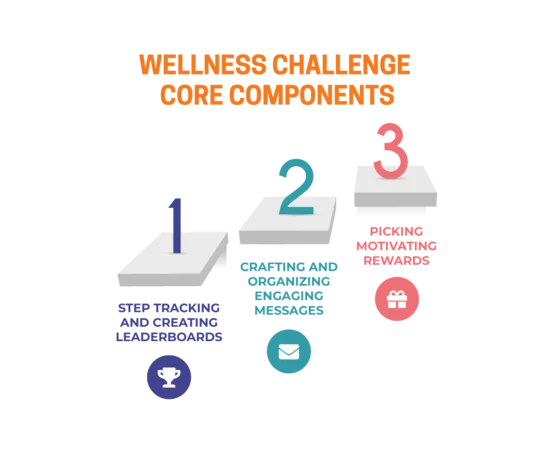
Why Run A Step Challenge In The Workplace?
Introducing a step challenge in the workplace brings numerous benefits that contribute to employee well-being and enhance the overall work environment. By implementing step challenges, employers demonstrate their commitment to fostering a healthy and thriving workforce. Additionally, these programs:
- Boost morale and engagement: Implementing a step challenge demonstrates a commitment to employee health and well-being. Those who feel valued and cared for by their company are more likely to be motivated and engaged at work.
- Improve physical health: Step challenges combat the sedentary nature of office jobs by encouraging regular movement. Walking is accessible and inclusive, promoting physical well-being for most employees. People who use wheelchairs or have other physical limitations can still participate by tracking alternative activities like arm movements or wheelchair rolling.
- Enhance mental health: Regular exercise releases endorphins, reducing stress, anxiety, and depression. Improved mental clarity helps employees better manage workplace challenges.
- Enhance team dynamics: Step challenges provide an opportunity for colleagues from different departments to come together, compete, and support each other’s progress. Collaborating towards a common fitness goal enhances communication and fosters stronger relationships, improving team dynamics.
- Support workplace productivity: Physical activity improves cognitive function, focus, and energy levels, leading to better job performance. Furthermore, a sense of team spirit and shared achievement can enhance work projects and drive productivity.

How To Set Up A Step Challenge
There are multiple ways to organize a step challenge in the workplace, including options that are creative and cost-effective. Regardless of methodology, you must be able to facilitate three different functions: (i) participant tracking, (ii) reporting and data aggregation, and (iii) leaderboard creation.
1. Step Challenge Participant Tracking
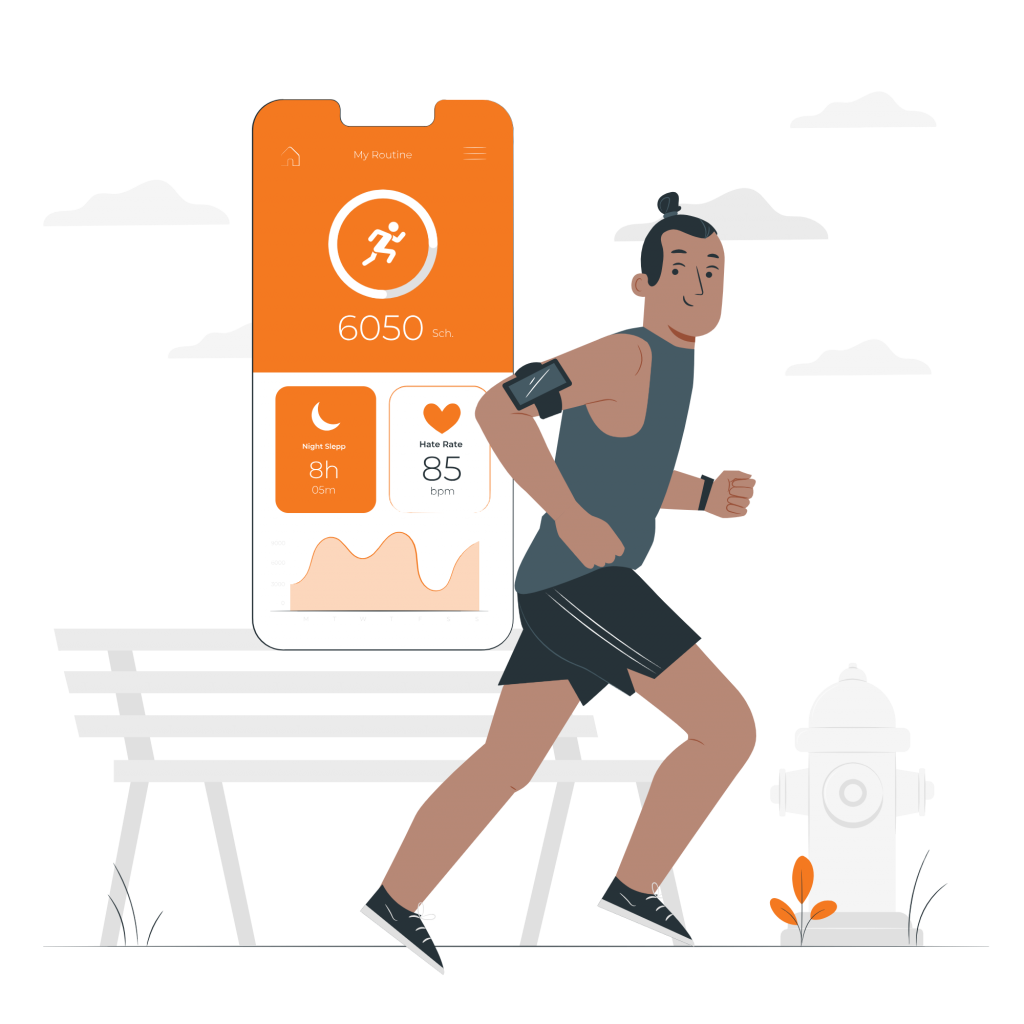
Step tracking is commonly associated with wearable devices like Fitbits and smartwatches (e.g., Apple Watch). These devices monitor movement, and it’s likely that a large portion of employees already own or plan to purchase one. In fact, in 2023, over one-quarter of the US population owned a wearable device, and that number has only increased.
However, wearables are not the only tool for facilitating walking challenges. Many smartphones have accelerometers that free mobile apps can use to automatically track steps. Employees who don’t want to invest in a wearable can download one of them to track their activity.
Apps For Step Tracking
Many smartphones already have free, pre-installed apps that track steps, such as Apple Health for iPhone users and Samsung Health for Samsung users. Here are some other apps participants can use to track their steps:
- Leap Step Counter: This app has a built-in sensor and can monitor walking distance, time, and calories burned. Participants can set a goal before starting a step challenge, and the app will provide a visual report of their progress.
- MyFitnessPal: Popular for its food tracking capabilities, this app can also act as a step counter. Participants can input step goals to stay on track during the challenge.
- MapMyWalk: With this app, walking becomes an opportunity to explore and discover new places. It tracks steps and distance while recording an outline of participants’ walking routes on a map.
- Fitbit: This activity tracking app is available to everyone (with or without a Fitbit). It allows users to become “friends” with other participants — their combined activity will appear on a shared leaderboard, showing how they rank against each other.

If you anticipate issues within your community regarding the use of wearable devices or smartphone apps, consider offering low-cost pedometers as a substitute. These devices are available online at affordable prices.
2. Reporting, Data Aggregation, And Leaderboard Creation
After taking the necessary steps (no pun intended) to track their activity, participants need to report their steps to the organizer. There are several options for participant reporting: (i) the Dinosaur Method, (ii) the Technology Method, and (iii) the Platform Provider Method.
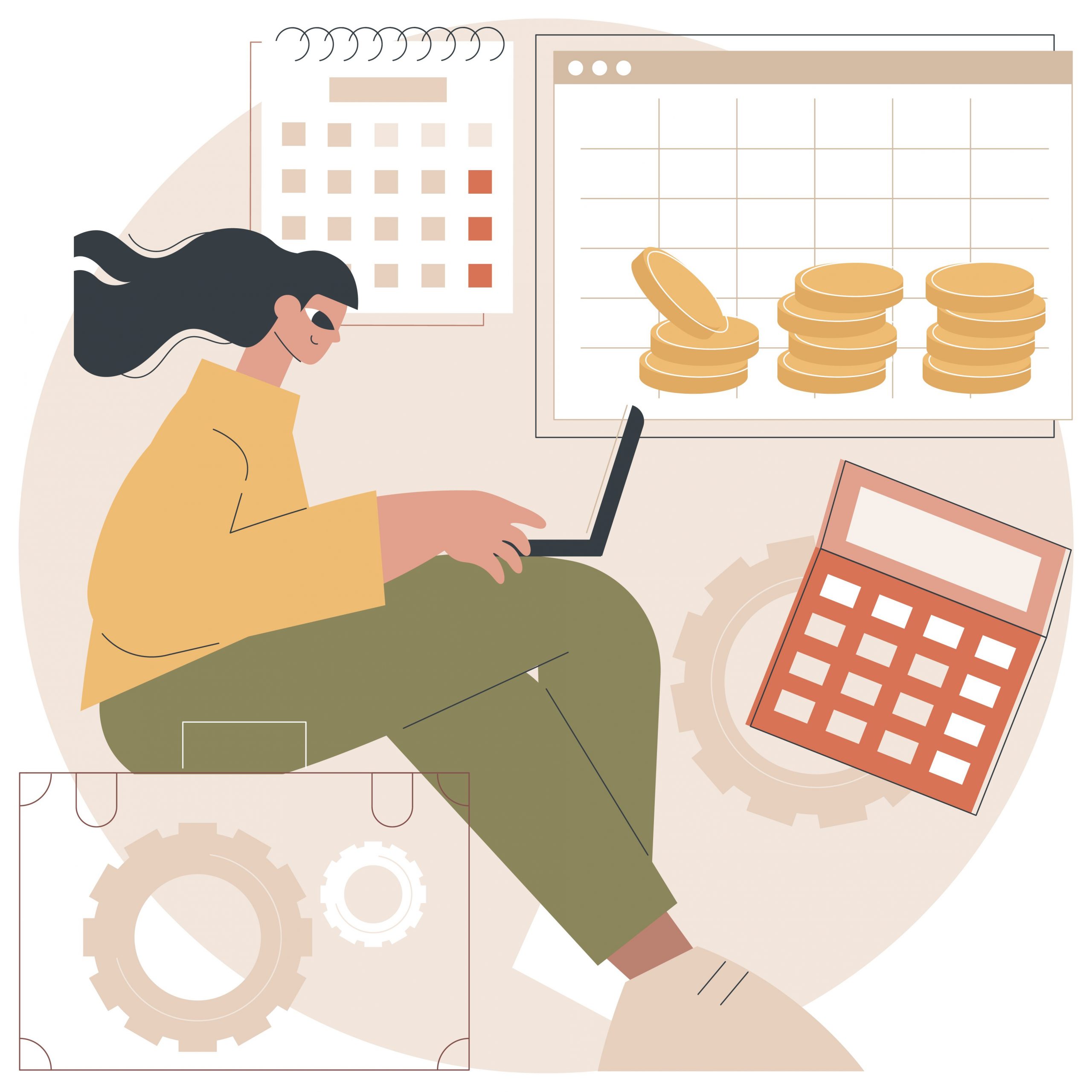
Dinosaur Method
a. Manual Reporting
This low-cost method doesn’t require technical skills but involves more manual work. Employees report step counts, miles, and walk durations using activity trackers (wearable devices) or apps. They submit this data through a survey tool such as Google Forms (free), Survey Monkey (free or paid), or Typeform (free or paid). Collect data weekly to reduce the reporting burden on participants and organizers.
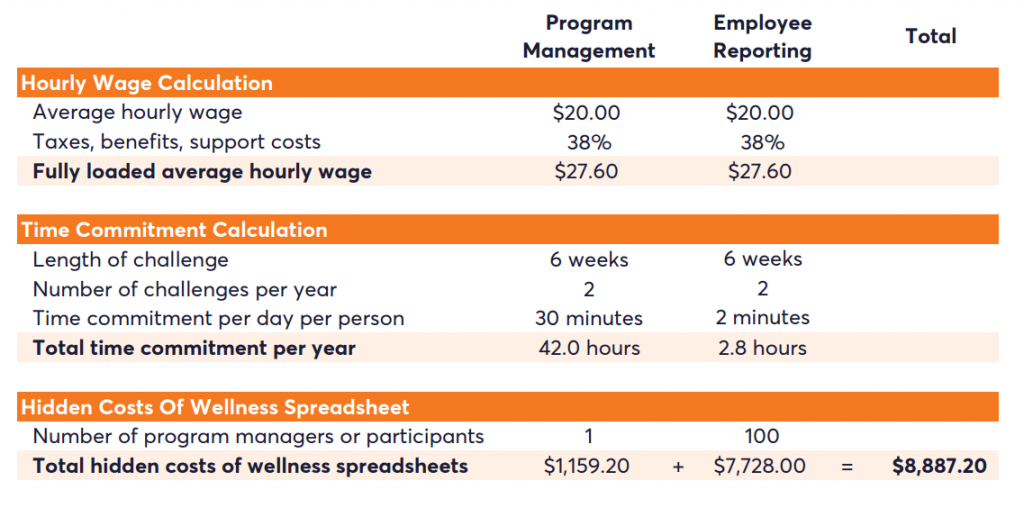
b. Data Aggregation And Leaderboard Creation
Aggregate the reported data into a spreadsheet using tools like Microsoft Excel or Google Sheets. At the beginning of the challenge, assign each user a unique ID in Excel, then use the VLOOKUP function to compile step counts into a leaderboard. If you are not comfortable with Excel, simply download the free Wellable template, which includes all necessary functions embedded into a single file. Follow the instructions on the first sheet and you’ll be well on your way to organizing your challenge!
From the aggregated data, sort participants by step count to form a leaderboard. The free Wellable template automatically pulls the aggregated data into a team leaderboard. You can share this with participants by taking a screenshot and sending it through email or the company intranet.

Technology Method
Many applications allow users to share their statistics with friends, family, and even strangers! Some platforms gamify the experience by organizing results in a ranking format to add friendly competition. You can leverage these social features to create your own program leaderboard without hiring a third-party vendor or managing spreadsheets.
a. Reporting
First, participants must synchronize their health data to a single platform that can track steps from a device or phone. For example, the free Fitbit app can track activity for employees with and without a Fitbit device so everyone can participate. Participants join a challenge or become “friends” with other people on the app, which automatically generates a leaderboard.
b. Data Aggregation And Leaderboard Creation

With this method, participants benefit from automated tracking, and employers benefit from real-time, hassle-free leaderboards. However, it also has multiple limitations:
- Your challenge will be committed to a single app, excluding non-compatible devices (though employees can still opt in to participate with their smartphones).
- You may only be able to track steps, not distance or time.
- Most apps limit how many users can participate in challenges, capping the number of participants you can have in your program.
- Participants must find their peers and add them as friends on the platform. If participants already have family or friends added, their stats could appear on the leaderboard, making it harder to determine one’s real place in the competition.
Despite some limitations, using a technology-based tracking method offers convenience and boosts engagement with minimal effort. By automating data collection and leaderboard updates, you can create an exciting, competitive environment for employees without managing tedious manual processes.
Platform Provider Method (Bring Your Own Technology)
a. Reporting
Companies with larger budgets may consider working with third-party vendors. Employees go through a one-time setup process to connect their apps or devices with the platform, and the provider takes care of the rest. All relevant data (e.g., step count, distance, duration) will automatically sync with the platform.
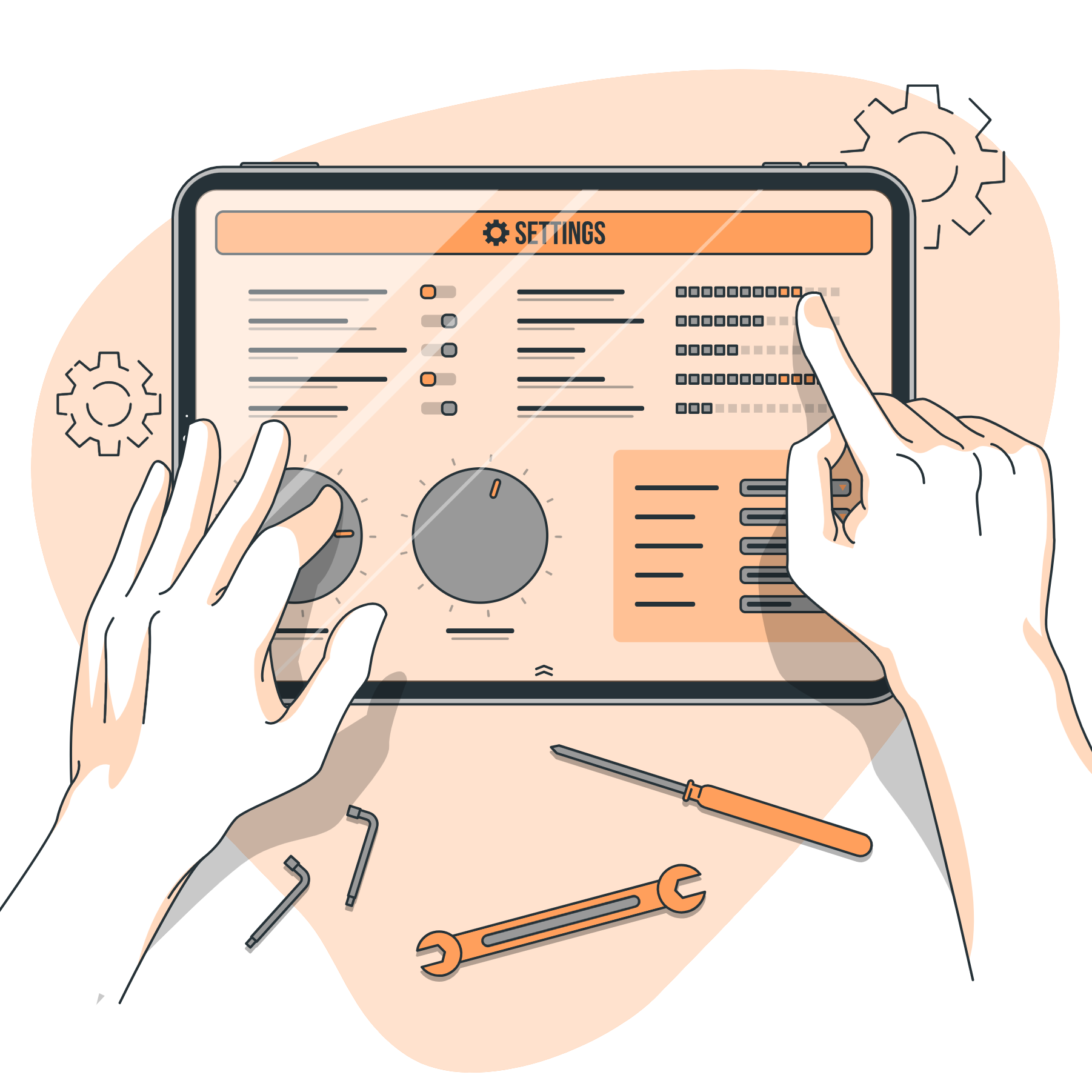
b. Data Aggregation And Leaderboard Creation
Managers have access to a dashboard to monitor participants and analyze program success. With higher quality vendors, employers have greater flexibility to customize programs.
Why BYOT?
Bring Your Own Technology (BYOT) allows employees to participate using their tracking technology (app or device) of choice. This eliminates the need for companies to purchase devices and caters to individual preferences. For example, a Fitbit Flex might be a good option for those who are just starting out and don’t need many sport-specific features, while more serious athletes might prefer to go with Garmin watches that focus on performance.
Encouraging employees to use the technology they’re most comfortable with removes the burden of learning new technology. The focus then shifts from getting accustomed to a foreign device towards developing better habits.
While it might sound out-of-reach, working with vendors is not as expensive as you might think! Most programs have a fixed administrative fee and variable costs based on number of users. While program coordinators will still need to put in the hours to manage the program, the amount will be significantly reduced.
With the BYOT approach, it’s important to choose a platform that can pull in statistics from multiple devices and apps. Most platforms will automatically generate a leaderboard for participants to check their ranking in real-time, eliminating the need for the organizer to distribute it manually.
Realizing That DIY Is Not Your Thing?
Some vendors have dedicated account managers to design new challenges, create content for distribution, and troubleshoot any technical problems that arise. This frees up time for employers to focus on the strategic aspects of wellness programs that third parties cannot assist with.
3. Engaging Communications
Communication is crucial for the success of any wellness challenge. Effective communication ensures that everyone involved understands the goals, rules, and expectations of the program. This helps to prevent misunderstandings and confusion, leading to a smoother and more enjoyable experience for all participants. To boost participation, your messaging must be compelling and clear.
Organization
The easiest way to plan your communication strategy is to create an editorial calendar that outlines every email, message, or post you’ll send to promote the program. Think of this as a marketing tool and approach your wellness program recruitment the same way you’d “sell” to a customer. With 100 to 200 emails flooding the average inbox daily, your wellness challenge announcements are just one of many competing for attention. Planning out communications in advance gives you more time to craft convincing, creative, and relevant content, making employees more receptive to your messages.
What should I include in my calendar?
You should use multiple distribution channels for communicating important challenge information, including:
- Emails
- Social media posts
- Prints/posters
- Intranet messages, etc.
Each message should be aggregated in one document (e.g., calendar) and include all relevant information. The following column headers are recommended:
- Publish Date: The exact date when the communication (email, social post, etc.) will be sent or posted.
- Title/Description: A brief summary or title of the message, outlining its purpose or content.
- Status: Progress notes for each communication (e.g., draft, ready to publish, published).
- Due Date: The deadline for finalizing the message to ensure it’s ready for the publish date.
- Distribution Channel: The specific communication format, such as email, social media post, poster, or intranet message.
- Producer: The person responsible for creating or overseeing the content.
- Notes: Any additional information or reminders related to the communication.
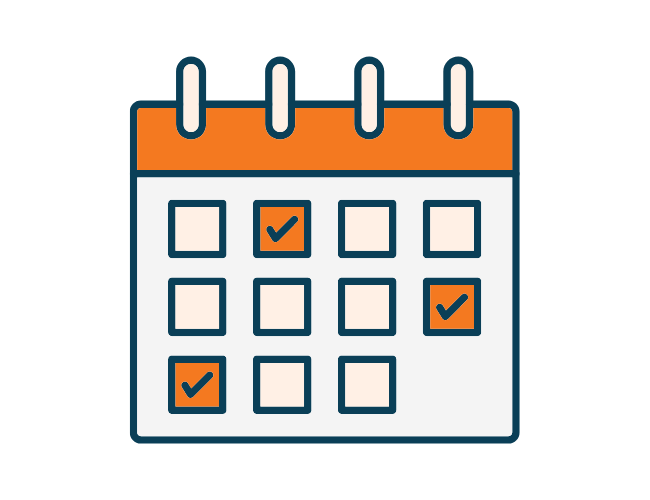
Planning these details allows you to see the bigger picture and provides a clear, actionable blueprint ahead of the challenge launch.
Personalization
Given the number of emails employees receive daily, a generic greeting like “Hey there” won’t cut it. Luckily, tools like MailChimp makes personalization easy.
Once you’ve imported participants’ information (name, email, etc.), you can send emails that address people by their first name. Studies have shown that emails with the recipient’s first name in the subject lines have higher open rates. Personalize it further by segmenting email recipients. For example, you can send reminders to those who did not open your email or sign up for the challenge.
MailChimp’s free version supports up to 2,000 subscribers and 12,000 emails per month, which should suffice for a small-scale challenge. For larger initiatives, consider a professional service to ensure the best experience for your employees.
Health Tips
Sending educational materials can increase engagement in the program while maximizing employees’ adoption of healthy behaviors. In a step challenge, distribute information on the benefits of walking and the health risks of prolonged inactivity and sitting. Below is an example infographic, created by the International Sports & Culture Association’s Campaign for the Get Europe Moving campaign.
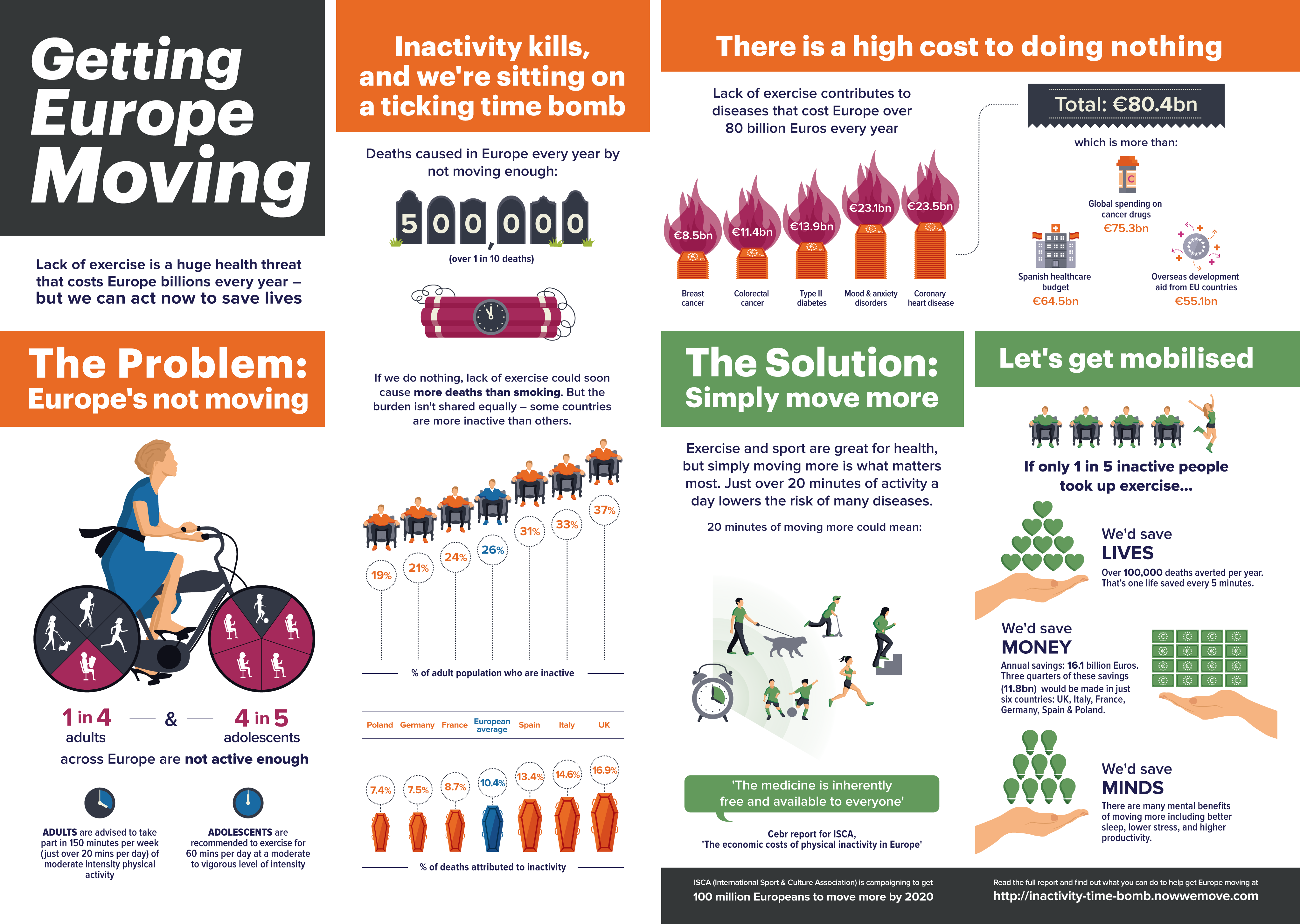
When sharing information, always use trusted and reliable sources. There are plenty of free, credible resources available, including:
- American Heart Association
- Intermountain Healthcare
- Fitbase Blog and Research Library
- Health News – CNN.com
As a rule of thumb, use the quick guide below to help judge the legitimacy of sources:
- Accuracy: Does the site use reliable research? Do they provide links to the original research/source of information? Cross-check information across multiple sources to ensure consistency.
- Authority: Websites ending in .org, .gov or .edu are usually the most reliable websites for health facts. If the website is not a non-profit/governmental website, do they link their claims to authoritative sources?
- Bias: Who pays for the website/research? While company blogs can be factual, verify the data by checking the original research. For example, the Wellable Blog always links to primary research.
- Recency: When were the facts last updated? Medical research evolves constantly, so information should not be older than three years.
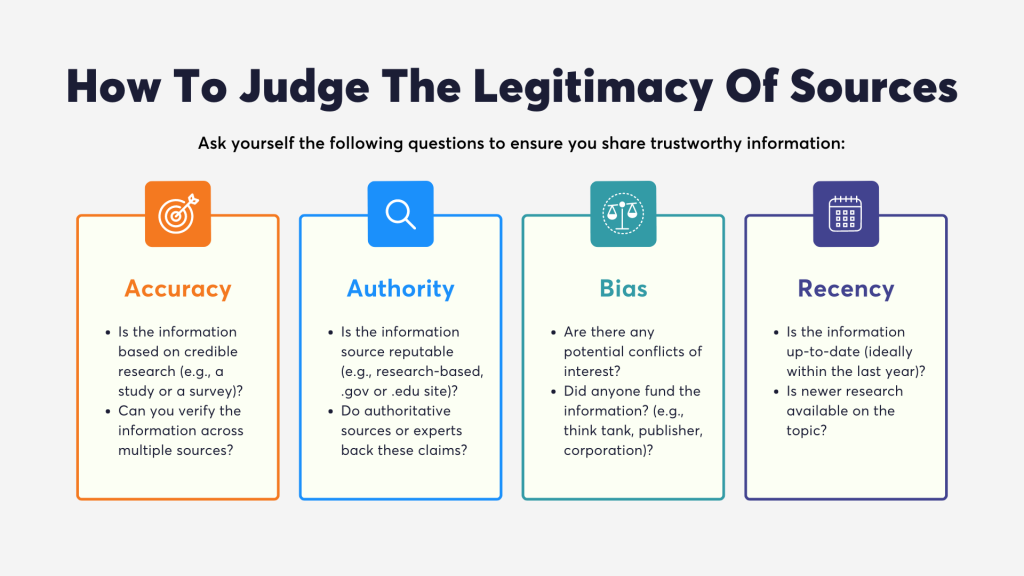
Creativity
Social media is dominated by engaging visuals like infographics, short videos, and images that capture users’ attention. Online tools like Canva or Venngage make creating graphics quick and painless. These platforms offer extensive template libraries, so previous design experience is not needed to use them properly. Canva operates on a pay-as-you-go model for premium features, while Venngage allows free creation and social media sharing (with a paid subscription for advanced templates and download options).
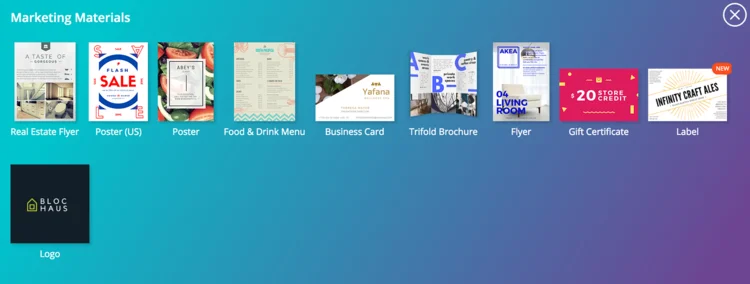
If you plan to run recurring challenges, showcasing the success of past events can boost participation. Compile pictures, videos, and participant testimonials from previous challenges into a PowerPoint presentation and share it company-wide.

4. Motivating Rewards For Employees
Rewards serve as incentives for employees to join the program. While some argue that lasting behavior change comes from intrinsic motivation (and external rewards may not sustain habits post-program), rewards can be the nudge some employees need to participate. For those content with their current lifestyle, prizes can be a catalyst to kickstart new wellness habits — whether it’s completing a 5K or swapping fast food for a salad.
Aim to engage employees who may need the extra push to adopt healthier behaviors, as health-conscious individuals are likely to maintain positive habits regardless of their participation in a wellness program. These individuals often benefit most from wellness programs and challenges.
Companies with smaller budgets must carefully balance cost and appeal when it comes to rewards. High-end prizes like activity trackers can be expensive, while lower-value incentives like $20 gift cards may not be exciting enough to drive participation. Ideal rewards strike a balance: they should be meaningful, attractive, and affordable. Below are three popular (and affordable) rewards.
Public Recognition
Public recognition is a powerful way to motivate employees. While it’s often paired with other perks like gift cards or goodies, recognition alone can be impactful. Here are fast and easy ways to recognize outstanding participants:
- Create an email shout-out or send a message on the company’s intranet recognizing their hard work.
- Make a poster of the program featuring photos of the winner(s).
- Pin a photo of the winner(s) on your organization’s physical or virtual bulletin board.
Clearly highlight why the person is being recognized — did they walk the distance between Boston and New York? Did they achieve the equivalent of climbing Mt. Everest? Make sure their accomplishments stand out!
Extra Vacation Day
Who doesn’t want an extra day off to unwind and relax? If you can afford it, offer additional paid vacation days to reward the winner(s).
Employees who take breaks from work often return with improved productivity and reduced risk of burnout, so this reward incentivizes employees to create healthy physical habits and enables the winner(s) to relax mentally.
However, not all organizations (particularly small businesses) can afford to provide extra paid vacation days. In such cases, allowing employees to work from home can be a great alternative, especially if their roles allow for flexibility.
Freebies From Community Partners
Q: How do TV shows offer big-ticket prizes to winners without having to pay for the rewards themselves?
A: They partner with brands eager to advertise their products or services. You can apply the same strategy to secure exciting rewards for your program participants.
Many local businesses (e.g., gyms, yoga studios, movie theaters, healthy restaurants) are willing to provide discounted or free items in exchange for exposure. Reach out to these companies and demonstrate how you’ll promote their products, whether through flyers, shout-outs, press releases, or social media. If they agree, you can offer fantastic prizes for participants — without bearing the costs yourself — while supporting local businesses. It’s a win-win for everyone involved!
Conclusion
Employee wellness is more important than ever, but it doesn’t have to break the bank. By effectively utilizing your time and resources, you can successfully organize and administer wellness challenges in-house. If you need additional support, book a free demo with Wellable to explore how our customizable programs can elevate your workplace wellness initiatives.
This article was last updated on October 4, 2024













